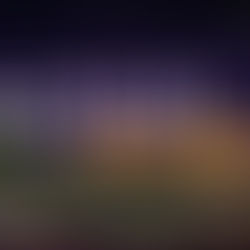New Transcription: "Main Theme" from Bravely Default II (2020)
I've been time travelling lately - here's a transcription of what is likely to become the main theme for the upcoming "Bravely Default II". This track was released alongside the announcement trailer last month.
If you're after the sheet music for the "Main Theme" from Bravely Default 2, you can find it here!
This includes individual part scores for:
Piccolo
2 Flutes
2 Oboes
2 Clarinets
2 Bassoons
4 Horns
3 Trumpets
2 Trombones
Tuba
Snare Drum
Bass Drum
Suspended Cymbal
Clash Cymbals
Tam-tam
Wind Chimes
Tubular Bells
Glockenspiel
Filtered Glockenspiel
Harp
Acoustic Guitar
Violin I
Violin II
Viola
Violoncello
Contrabass
If you are one of my Patrons, you can now find the MIDI, XML and SIB files I created for this transcription now available to download from your Patreon Google Drive folder!
Arranger's Note:
"The track begins with an introductory segment that grows from a single acoustic guitar to nearly an entire orchestra within 10s. Melodically, we hear a familiar tune - the "Bravely Default" motif - appearing three times each following a tertiary modulation up a minor 3rd (a particularly triumphant modulation, notably used in "Lord of the Rings" soundtrack). Whilst we started in Eb major, we now find ourselves resting in G major (0:10), readying us for a perfect cadence modulation to the true tonic of C major (0:16).
Now the main track begins, of course, aptly with the "Bravely Default" motif in full. This motif uses a harmony that floats ever downwards with excellent voice leading. You'll notice the bass note descending chromatically for a few measures (0:16). This is due to the alternation of imperfect cadences and tertiary modulations; harmonically, we progress from C major - G major - Bb major - F major - Ab major. Within this progression, chromatically descending voice leading is possible (C - B - Bb - A - Ab) and used to great effect.
As the motif progresses, more instruments are introduced with bassoons, strings and a glockenspiel gradually being added to the accompaniment. As we reach the end of the motif (0:30), we expect a perfect cadence modulation into F major. Instead, we are treated unexpectedly to an interrupted cadence into D major (0:32). Here, the motif is played in full once more, now with a clarinet and more tangible bass instruments. By 0:39, we have the full ensemble once more with the trumpet taking the melodic role.
Once the motif is finished again (0:49), we receive another interrupted cadence into the relative minor - E minor (E-G-B) - with a gorgeously expressive oboe solo performing a new motif that may hold an important role in the game. Akin to the "Bravely Default" motif, this new motif follows an extended descending harmony (though not chromatic). This new motif is expanded upon at 0:57, now with the addition of strings and flutes providing counter-melodies.
By 1:06, the oboes and flutes leave us, and we are treated to a luscious string passage that develops the oboe material heard prior. As this nears its end (1:21), we progress to the tonic major; E major (E-G#-B), expecting a modulation to A major (A-C#-E). However, an E# makes an abrupt appearance (in the cellos, contrabasses, etc.), transforming the perfect cadence from E - A to C# - F# - a tertiary modulation once again. Interestingly, although E#'s are used here (1:22), there remains the appearance of some E-naturals (see the violins) creating a subtle false relation dissonance that is only softly heard thanks to the smooth voice leading.
With the progression into F# major (F#-A#-C#), we reach the climax and utilize the full ensemble to expand further upon the new string material heard at 1:06, now with some exciting horn chromaticisms (1:31) and a plethora of tertiary modulations (1:39, 1:44, 1:46). The "Bravely Default" motif also makes a fragmented return (1:43), following similarly as it appeared in the introduction through tertiary modulations, until we reach 1:48. Here, we get a surprising triadic chromatic descent with an Eb-major chord held high above as a pedal. This clash of chords creates an unsettling feeling, concluding with a whopping tritonal clash of A major against Eb major (1:50; very Stravinskian!) which is treated as the dominant for a perfect cadence into the concluding D major which can then easily slip back down to C major for the loop.
And for fun, participate in the RDG ("Revo Drinking Game"): take a shot every time you hear wind chimes! ;)"

































Comments